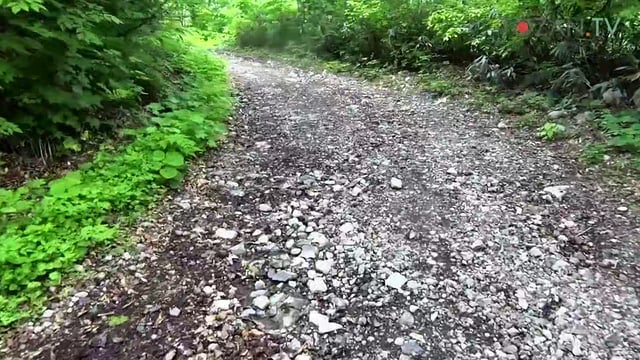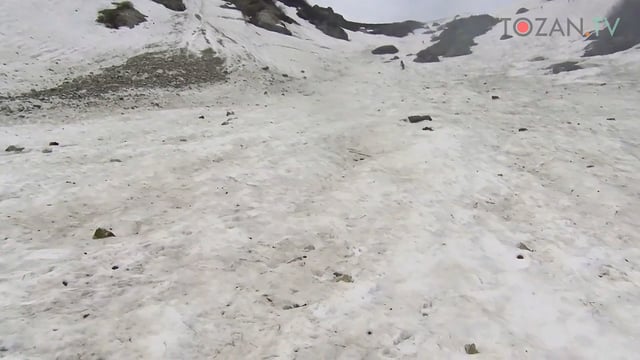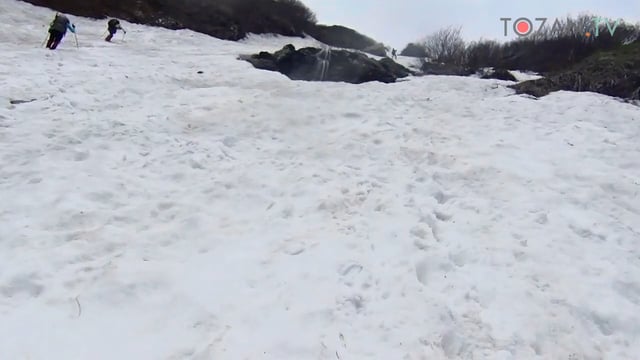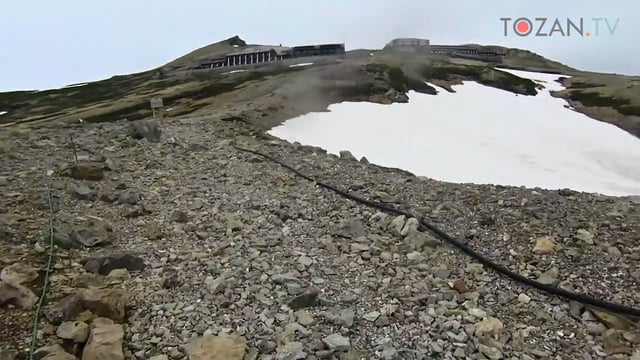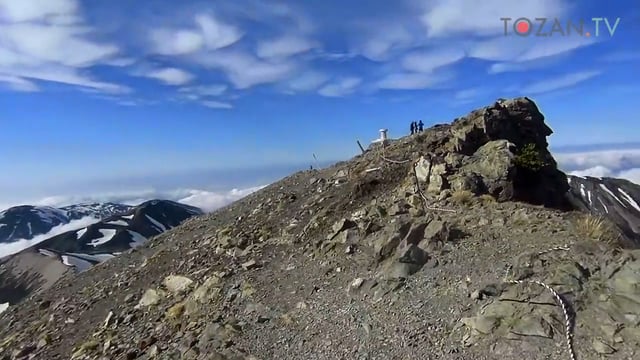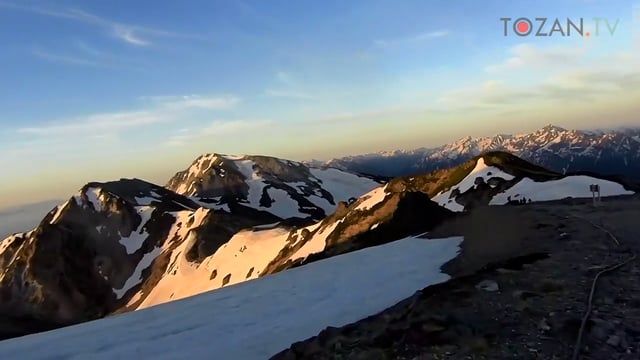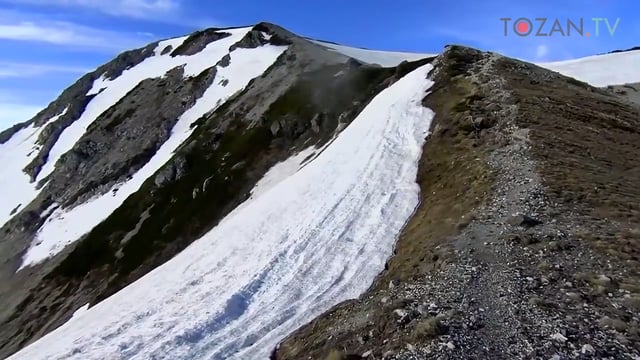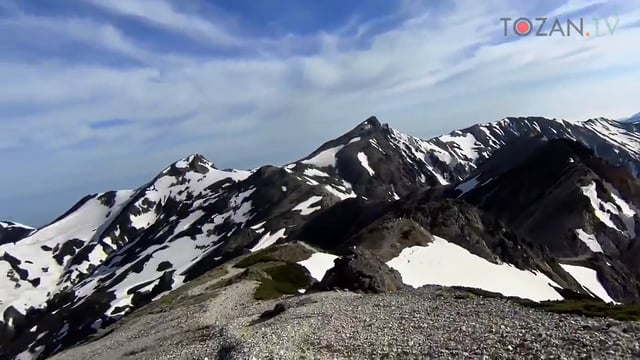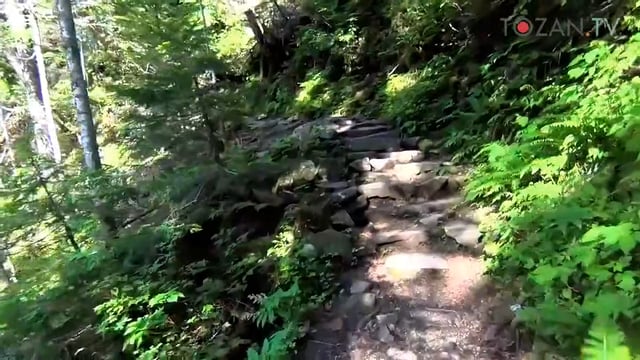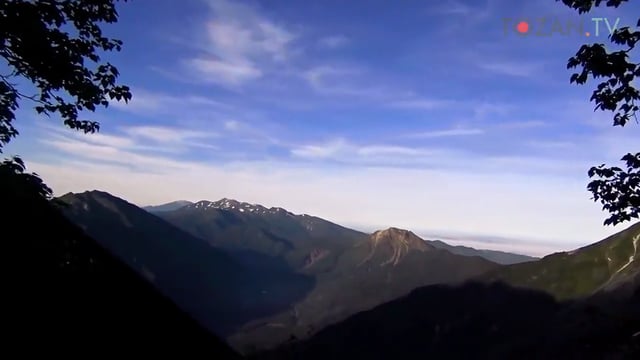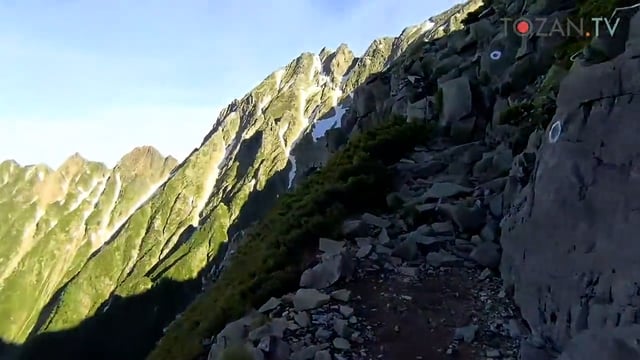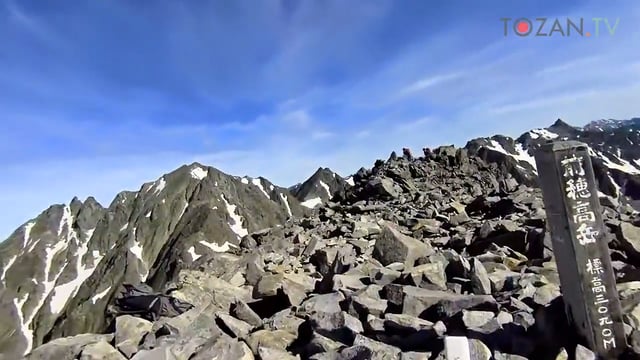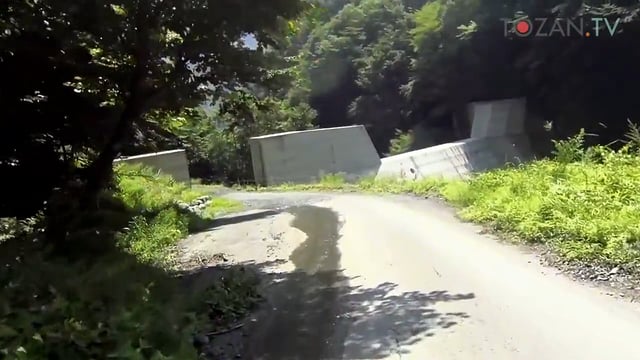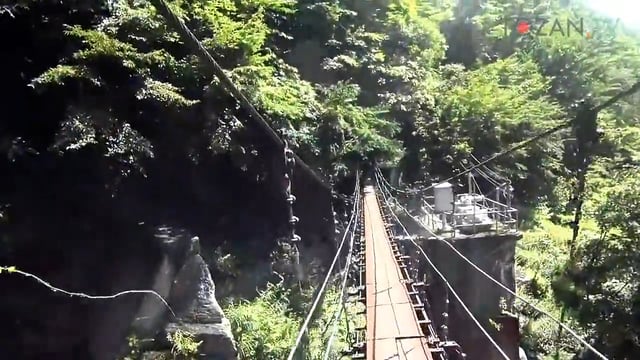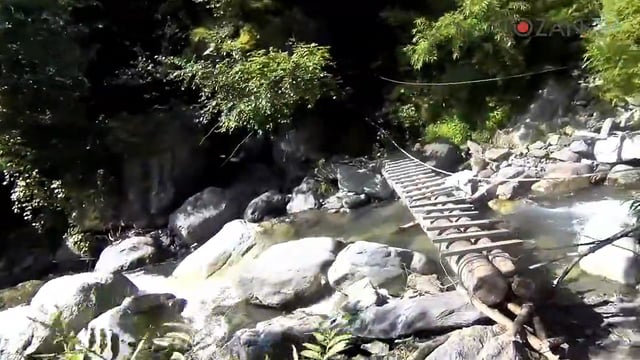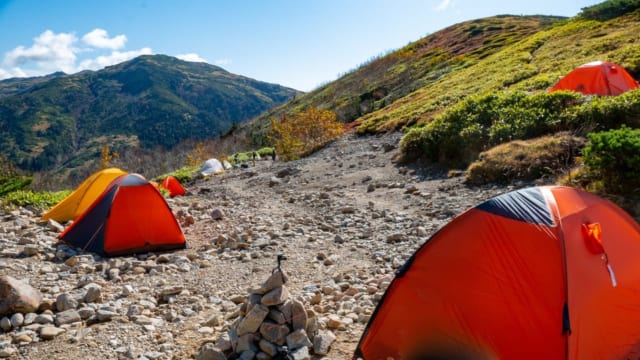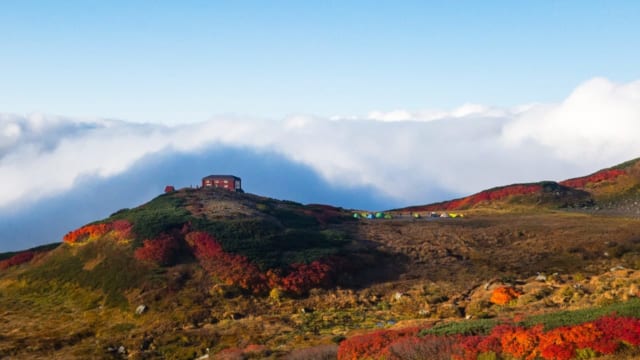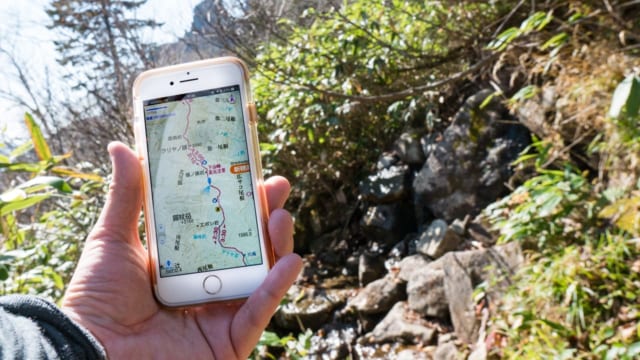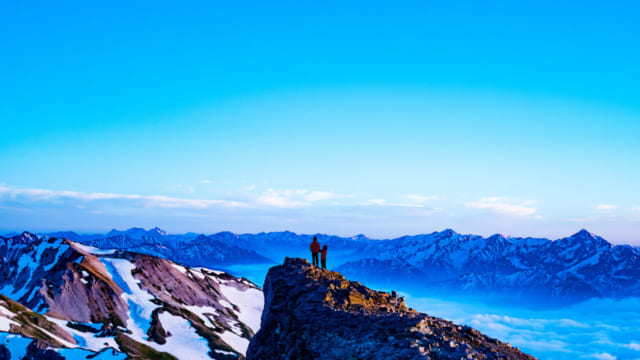| Time | Event |
|---|---|
| 00:01:13 | Seitengrat |
| 00:24:47 | a ladder and a chain handrail |
| 00:42:42 | the base of Seitengrat |
| 01:12:40 | reached Karasawa-goya |
| 01:19:39 | reached Karasawa hut |
From the Hotaka-dake hut to Karasawa via Seitengrat
Seitengrat1 is the most famous route to hike up Okuhotaka-dake2. I completely thought that Seitengrat is not steep. But it’s not. It was quite hard after long hike. Please be careful this course has a few fatal accidents every year especially when you pass (or passed by) people.
After finishing descent of Seitengrat you can see Karasawa hut (Karasawa-goya3) first. If you stay at a campsite you may head to Karasawa hut (Karasawa hutte4) over the campsite. Karasawa5 is a general term around here.
- ザイテングラート(ざいてんぐらーと). Seitengrat comes from German. “seiten” means a branch, “grat” means a ridge. Of course, there are a lot of “Seitengrat” in Japan. However we call Seitengrat only here. It’s strange. ↩
- 奥穂高岳(おくほたかだけ). “奥” is the meaning of the inner part or the depth. One of the mountain which consists of Hotaka-dake(穂高岳). It is the highest peak in Hotaka-dake and what’s more, it is the highest mountain in Northern Japanese Alps, and the forth highest mountain in Japan. ↩
- 涸沢小屋(からさわごや). A hut located in Karasawa curl. You can see right side when you hike up from Kamikouchi. “小屋” is meaning of hut. ↩
- 涸沢ヒュッテ(からさわひゅって). Another hut located in Karasawa curl. You can see left side when you hike up from Kamikouchi. “ヒュッテ” is meaning of hut. It must be confusing if you call Karasawa-hutte or Karasawa-goya in English because both of them called the Karasawa hut. ↩
- 涸沢(からさわ). One of the most famous place in Northern Japanese Alps especially in its autumn color. Karasawa has a curl and two huts. A huge campsite in Karasawa curl and hundreds of tents in high season. ↩










